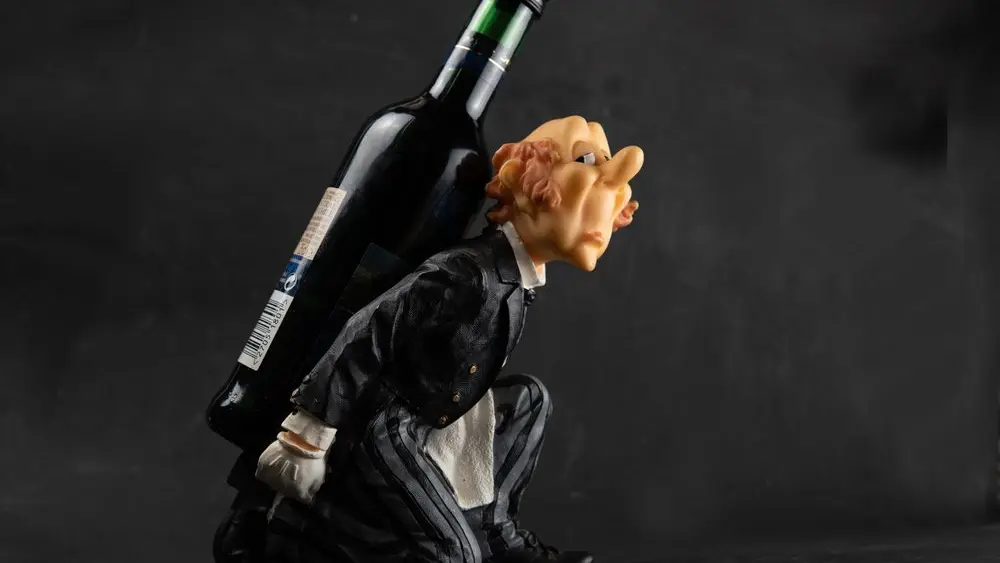It’s a cheap shot when a columnist says “I told you so.” It’s especially unattractive when the issue in question is particularly bad news. If, for example, I’ve been saying for the last year that you’d better get cracking when it comes to nailing down your grape- and wine-sales strategy, you might scoff and tell me, “What’s new?” And that’s when I’d sit back and go down the list.
First off is the economy, the stock market is on a stomach-churning roller coaster ride and may be heading for something more significantly painful. At the moment we are in what many savvy investors and economists call full-force momentum. That’s when the economy is not being driven by fundamental strength of high-consumer demand for the goods and services of reasonably valued companies, but instead by momentum within the market itself.
Consumers are becoming increasingly skeptical, evaluating current economic conditions less favorably from a year ago by 4.2 percent, according to the University of Michigan’s Consumer Sentiment Index. This might not seem like a huge drop, but given that unemployment is low and the Dow has recently slipped, it speaks to uncertainty.
In the past, I’ve highlighted everything from fewer cars being sold to complex math-driven models that show investors are no longer paying attention to a company’s performance — all of which point to a weakening economy. There is no major indicator I’ve found that would suggest we are headed for another round of extended growth. Yes, the tax breaks to wineries and other businesses will provide capital that might be used to hire, expand and innovate, but given that many businesses echo the growing concern expressed by consumers, they are equally as likely to hold those funds and see what transpires over the next year or so.
But that’s not all. The data now confirms what many in the wine industry already knew: 2017 was a tough year. The well-regarded annual State of the Wine Industry, produced by Silicon Valley Bank, highlights that the overall growth rate of sales for California wineries is hovering just over flatline at 0.3 percent and that tasting-room visitations continue to decline.
Another concern I have is that nearly 20 percent of the new wineries have come online only in the last three to five years, which means that their ramp-up of production — especially when it comes to aged red wines — will hit the market with increasing volume in the coming years. But these wines might be out of touch with changing consumer profiles.
Consumer demand for wine is changing, largely because the Baby Boomer generation is now being replaced by the Millennials at a staggering rate of about 10,000 a day. These replacement consumers don’t have the capital or desire to spend extravagantly like their older compatriots did. Instead, they are looking for value and unique/fun experiences that they can share with friends. Gone are the days where a dark, private wine-tasting could result in lifelong customers and in are the days when a single, poorly-rated experience at your winery or tasting room will be instantly posted on social media and result in lost sales.
Grape-growers, up to this point, have been relatively insulated from the pain. But this is beginning to change, too. The grower strategy, “If you grow it—especially if it’s Cabernet Sauvignon, Chardonnay or Pinot Noir—they will come,” has left some growers without long-term contracts or even short-term ones. For the last couple of years, savvy wineries have gone one of two ways. One way is to purchase vineyards from which they sourced in the past. (For example, the E&J Gallo purchase of the iconic 600-acre Stagecoach Vineyard, Duckhorn’s purchase of the “Three Palm” vineyard, and Far Niente Winery’s purchase of a 60-acre vineyard located within the Napa Valley’s Rutherford Bench region.) The other way is to eliminate the sourced vineyard from their lineup altogether.
What this means is that grape-growers will also now need to redouble their efforts to sell their fruit, just as wineries are beginning to pull back into themselves. This is similar to the dynamic back in 2006, when the economy was starting to feel the impending doom of the Great Recession.
It’s not likely that we are headed into anything worse than a 1 to 3 percent decline in GDP, but make no mistake — there are serious cracks in the barrel. As is the case in all challenging situations, there will be winners and losers. My point is not to say I told you so, but that you might want to gather the troops and batten down the hatches.
Author
-

Tim Carl lives, writes and teaches in Calistoga. He grew up in St. Helena and traces his Calistoga grape-growing roots back five generations. You can reach him at tcarl@northbaybiz.com.
View all posts




